War Mines Collection consists of two videogames in a single package, both based on the PC classic that used to come pre-installed with every copy of Windows, Minesweeper. I must use deductive reasoning to locate and mark all of the mines scattered across a grid. If I successfully mark every mine, I win. If I make a mistake and click on one, I lose. War Mines Collection recontextualizes Minesweeper puzzles onto the battlefields of the first and second World Wars. Solving each puzzle becomes more than an exercise in pure logic. My success or failure determines the outcome of key battles in two of the bloodiest conflicts in human history.
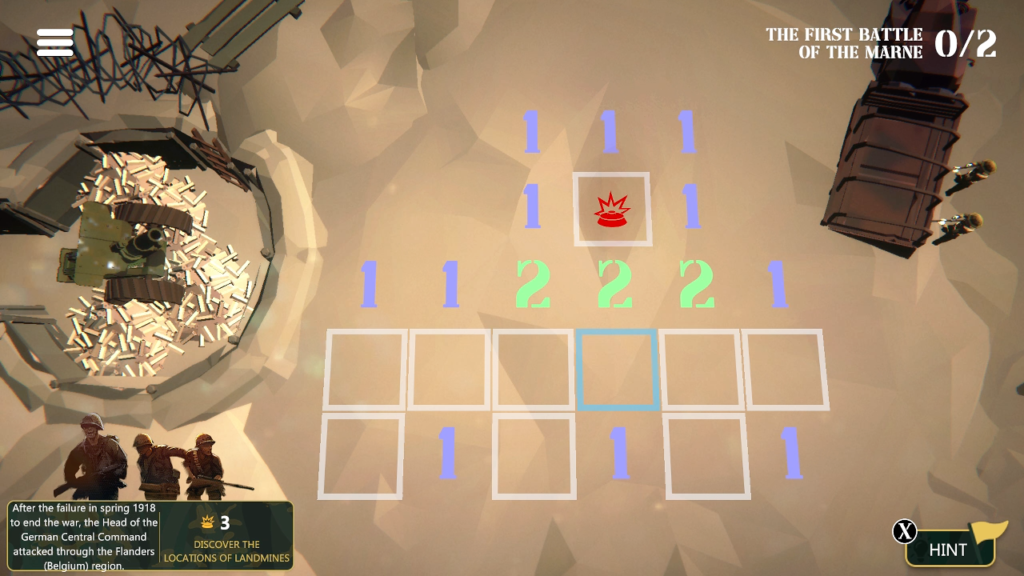
At its core, Minesweeper is a logic game. I am presented with a grid which can take a variety of sizes and shapes. Within this grid are a number of randomly-placed mines. The more mines present, the harder the puzzle is to solve. There are countless possible puzzle configurations to be solved, making Minesweeper a potentially endless videogame, contributing to its overwhelming success.
The first step in Minesweeper is always the most precarious. I must randomly select a square in the grid and click on it. This first square may well contain a landmine, unless the particular Minesweeper variation I am playing disallows this possibility (War Mines Collection seems to have included this feature).
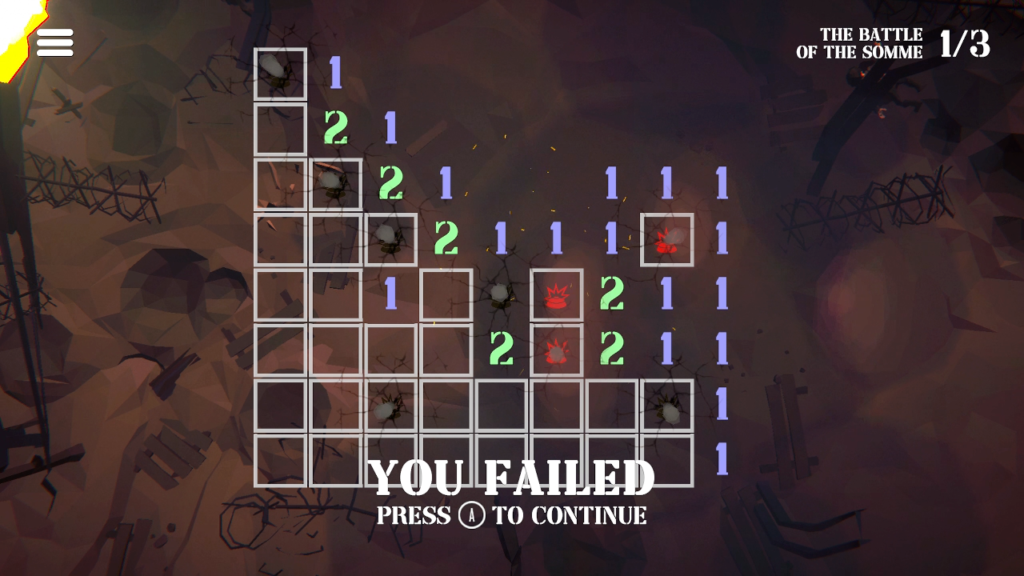
Assuming I do not lose from my first selection, the box will reveal a number or a blank space. Both possibilities are related to the squares that surround the clicked box. If it’s a number, it will show how many mines are in boxes adjacent to it, up to a potential of eight. If it’s a blank box, then every other box around it is free of mines. My first goal in most puzzles is to find one of these blank boxes, as they will also clear all adjacent blank boxes, unveiling a large portion of the minefield in a satisfying cascade.
This is where a round of Minesweeper truly begins.
I must deductively interpret the numbers I have revealed to determine where mines are located. The more numbers I reveal, the easier this task is. If I have revealed a 1, and there is only one unrevealed box adjacent to it, then I know the one landmine must be in that box. I mark it. If there are any other 1s adjacent to that landmine, then I know every other box around it is safe to click on, revealing still more numbers and blank spaces. Working methodically through each grid following this logic, I can reveal the entire board and solve the puzzle.
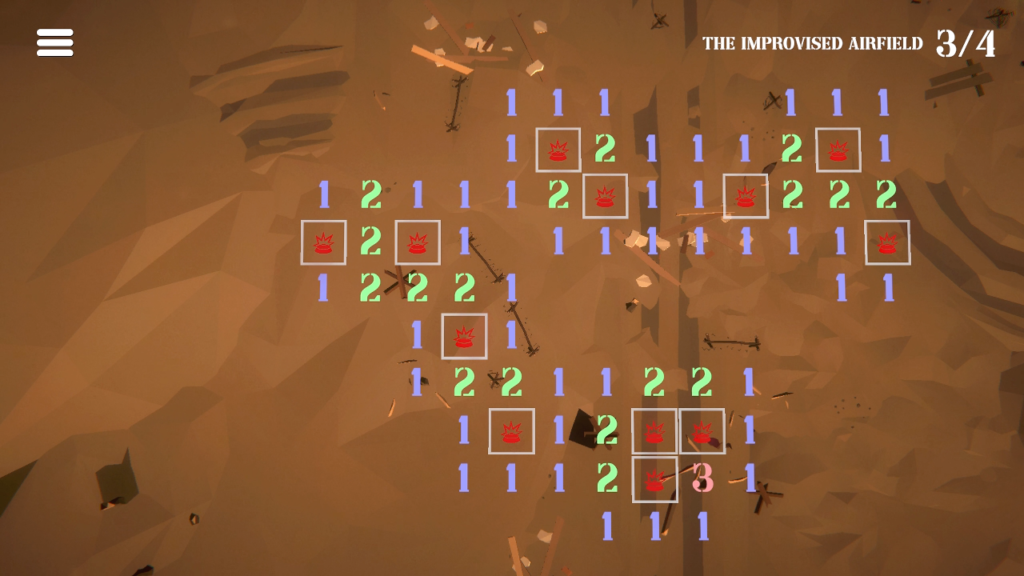
One of the more frustrating things about Minesweeper is when a configuration of numbers has multiple valid solutions, guessing is sometimes the only option I have. The larger the grid, the more likely I am to encounter one of these conundrums. War Mines Collection is no exception to this design quirk, and most of my difficulty results from these sorts of puzzles arising.
The two videogames included in War Mines Collection transport Minesweeper’s plain, grey grids onto battlefields inspired by real history. While I try to solve the puzzle, low-poly soldiers will fight a miniature war with each other along its edges.
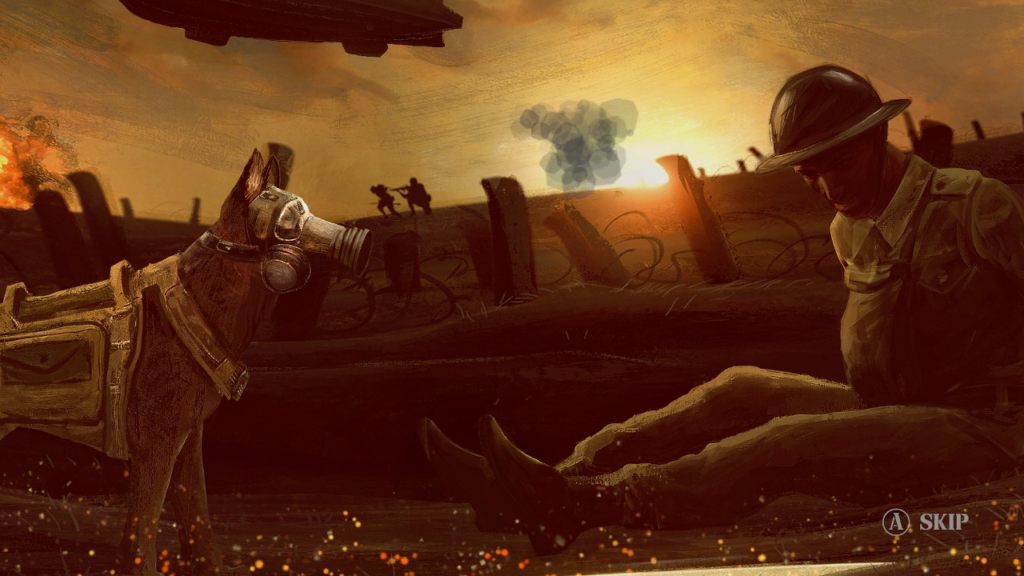
The first videogame in War Mines Collection is based on World War 1. Each set of puzzles is introduced by a short history lesson. While solving each puzzle, a brief factoid about the current battle is placed in the bottom-left corner of the screen. These lessons put the puzzles into a historical context. Occasionally these contexts change the nature of the puzzle.
After learning about mustard gas, the next puzzle will be partially obscured by mustard gas floating over the grid. A minefield set in a forest will have parts of the grid scattered with trees, further complicating my deductive tasks. Puzzles set in trenches or narrow city streets will be unusually long and narrow—which actually makes them easier to solve. Most puzzles are straightforward medium-sized grids, their only complication being irregular dimensions that barely alter the puzzle.
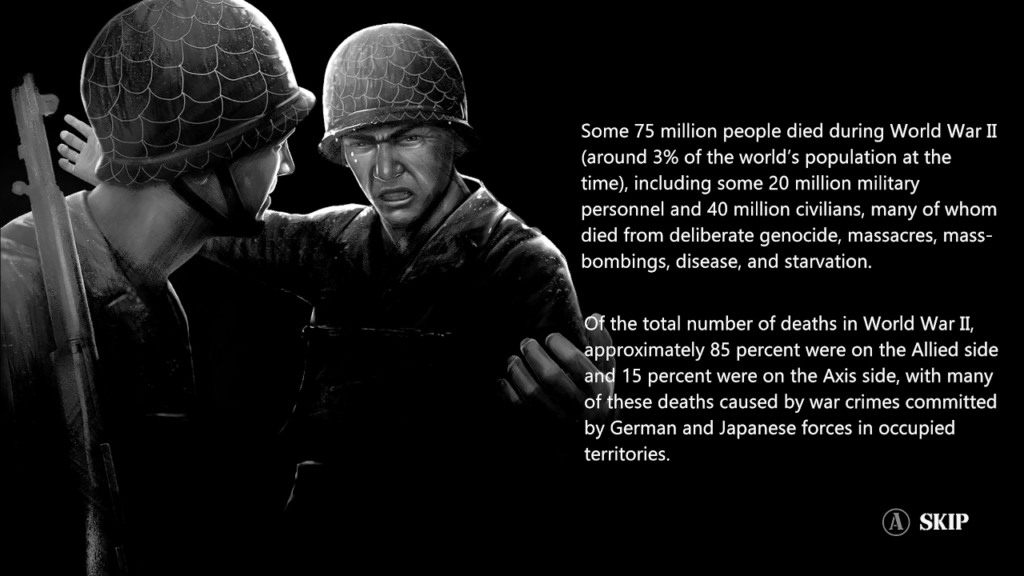
The second videogame in the collection is almost identical, but set in World War 2. Aside from a broad sense of setting, it is much less interested in educating me about the war. After the landing at Omaha beach, battles move to generic French villages as I follow the war across Europe into Nazi-held Germany. The factoids in the bottom-left corner are reduced to bland mission objectives like “clear the way for the allied troops” and “the cold weather means you have to hurry.” Stripped of its historical specifics, it’s an even more shallow videogame than its predecessor. I come away certain I have learned nothing about the war since it makes so little effort to teach me.
I am dubious of War Mines Collection’s historical accuracy. The lessons are riddled with spelling and grammatical errors, whether through poor writing skills or a poor translation, I cannot be sure. In either case, it makes me question the supposed facts imparted. The lessons are also so short they lack substance. Ultimately they teach little about either of the wars they describe beyond simple dates and statistics.
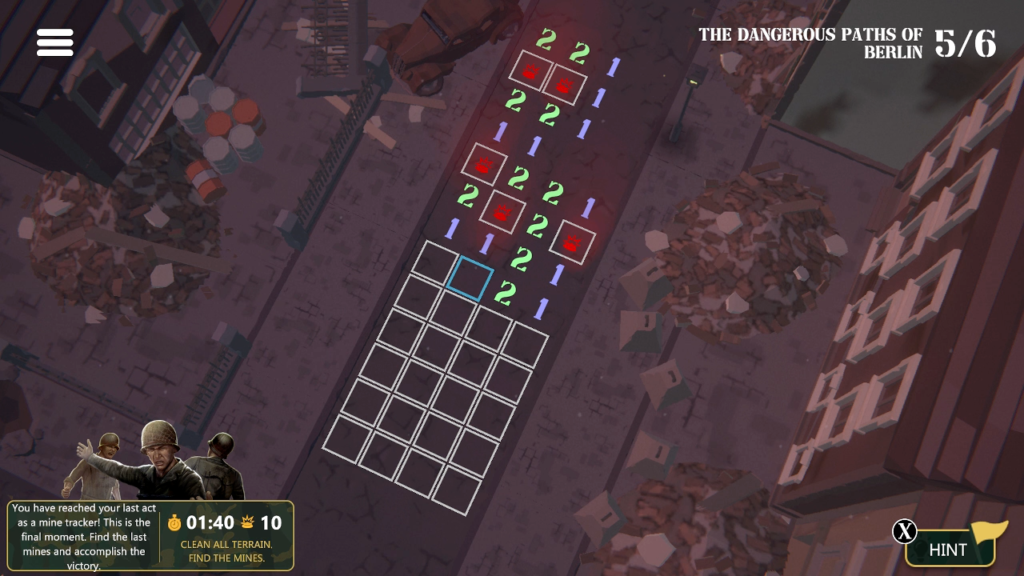
War Mines Collection is a slight package, its best part the competent puzzle videogame it has constructed itself on top of. Experienced Minesweeper players will finish both titles in a little over an hour. Randomly generated minefields create millions of potential puzzle configurations, in theory, but the slow and cumbersome framing device keeps this from being an enticing prospect. It’s simpler and faster to play regular Minesweeper on a phone, desktop, or web browser, free from the animations and history lessons that divide each puzzle set here. War Mines Collection is a curiosity at a cheap price, but hardly essential for either puzzle or history fans.